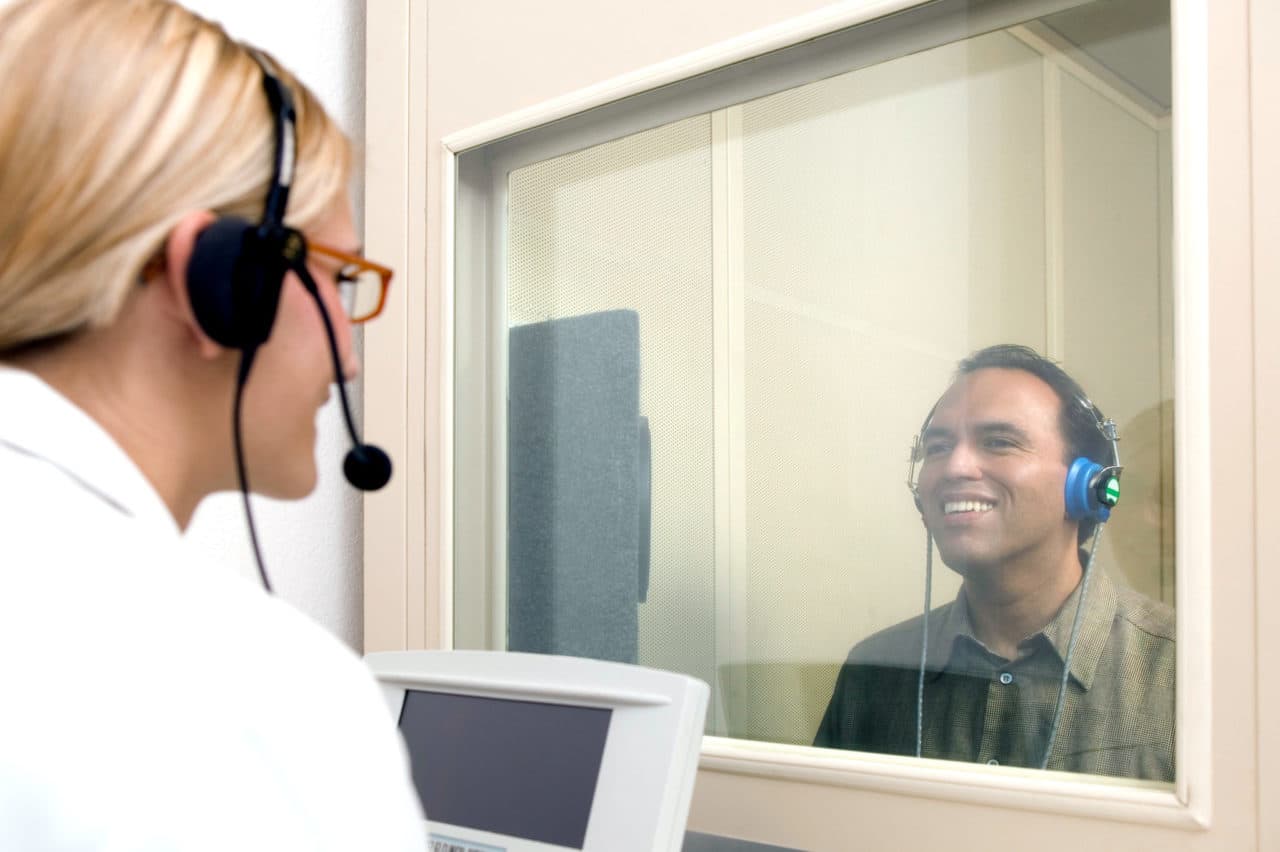An audiologic evaluation consists of a series of tests used to determine whether or not a hearing loss exists; and if so, determine the type, degree and configuration of the hearing loss. An audiologist will assess the results of each individual test in order to develop a treatment plan geared toward your unique hearing loss.
Who Should Be Given an Audiologic Evaluation?

An audiologic evaluation should be the first course of action for anybody who even suspects a hearing loss. The sooner a diagnosis of hearing loss is made, the more successful treatment will be. Early detection means more options for the patient.
Many physicians urge making audiologic evaluations a routine part of your overall health care, much like regular vision exams and dental checkups. They are quick, painless and provide immediate results.
What Does Diagnostic Testing Entail?
A comprehensive audiologic evaluation consists of a series of individual diagnostic tests that measure different aspects of your hearing. Following an otoscopic examination and a review of your medical history, you may be given any or all of the following tests:
Pure Tone Testing
Pure-tone testing (also known as pure tone audiometry) uses air conduction to measure your ability to hear sounds of various pitches and volumes. Wearing headphones, you will be asked to identify a series of tones by raising a hand, pressing a button, or responding verbally.
The results are charted on an audiogram, a graph that shows the type, degree and configuration of your hearing loss by comparing pitch (frequency) with loudness (intensity). The pattern recorded will help your audiologist determine your hearing threshold.
Bone Conduction Testing
Bone conduction testing is another type of pure-tone test that bypasses the outer and middle ear and measures the inner ear’s response to sound. If there is damage or a blockage in the outer or middle ear, or the pure tone responses suggest a hearing deficit, bone conduction audiometry testing will be used.
Instead of sending the tones through the ear, this type of testing is able to bypass the outer and middle ear and send the tone directly to the inner ear. A small vibrator is placed behind the ear. The device sends out a vibration that passes through the skull bone to reach the inner ear.
If the results of this test are different than the air conduction test, your audiologist can use this information to determine whether you have a conductive or sensorineural hearing loss.
Alternatively, a two-pronged metal tuning fork may be placed behind the ear or on the forehead. When vibrated, it produces a tone that travels to the inner ear via the skull. Your response determines how well sound travels through different parts of your ear, helping the audiologist diagnose your type of hearing loss.
Speech Testing
You will hear a recording of a list of common words spoken at different volumes, and be asked to repeat those words. Then, the audiologist will measure speech discrimination — also called word recognition ability.
Speech testing may be administered in either a quiet or noisy environment; results are recorded on the audiogram for easy visual reference.
Tympanometry
Tympanometry is a test of the middle ear used to detect fluid, abnormal ear pressure, eardrum perforations and tumors. It measures movement of the eardrum in response to air pressure; the results are recorded on a chart called a tympanogram.
Acoustic Reflex Testing
The acoustic reflex test measures involuntary muscle contractions of the middle ear, and is used to determine the location of your hearing problem (the ossicles, cochlea, auditory nerve, etc.) as well as the type of hearing loss.
Otoacoustic Emissions (OAEs)
Otoacoustic emissions (OAEs) are sounds generated by vibrations of the hair cells in the cochlea of the inner ear. OAE testing utilizes a tiny probe fitted with a microphone and speaker that is used to stimulate the cochlea and measure its response. Individuals with hearing within normal limits will produce emissions; when a hearing loss is significant, no sound will be produced.
This test helps determine whether there is damage to the hair cells of the cochlea. OAE testing is often included in newborn hearing screening programs.
Call Midwest Hearing at (651) 702-0750 for more information or to schedule an appointment.
